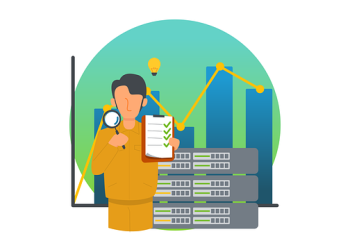Cloud Services are the distribution of hosted web services that include software, hardware, and storage. Cloud computing has become practically ubiquitous in every industry and enterprise. Primarily by being a part of a hybrid or multi-cloud system architecture, security in the cloud is a must-have for all businesses.
The technology, policy, control, and service that protect a company’s cloud data, application, and infrastructures from data breaches are referred to as cloud security platform.
Why Is Cloud Security Important?
Cloud security is necessitated by the widespread adoption of cloud technologies, as well as an ever-increasing amount and complexity of cyber threats. According to a cloud security report, 93 percent of businesses using cloud services have moderate or extreme concerns about their cloud security. One out of every 4 organizations has admitted a cloud security incident in the previous year.
Cloud security refers to a collection of technologies, controls, processes, and policies that work together to keep your cloud-based applications, data, and infrastructure secure.
It is a sub-branch of cyber and information security. It is a joint liability on your part and your cloud service platform.
You implement a cloud protection strategy to protect user data, comply with regulatory requirements, and protect your customers’ privacy. As a result, you don’t have to deal with the reputational and legal consequences of data breaches and data loss.
Things You Need To Check In a Cloud Security Platform
Check the Technology Compatibility
Check to see if the security platform and chosen solutions are compatible with your current environment and help you achieve your cloud goals. You should always make sure that the provider’s cloud design, specifications, and services are appropriate for your workloads and management preferences. You also need to know “How much customization the platform needs to be compatible with your technology?”
While selecting a cloud security platform, ensure the Security platform provides extensive relocation services, including evaluation and preparation assistance. Assume that you have a thorough understanding of the assistance available, map it to project assignments, and determine “What tasks are needed?”. Mostly, service providers provide technical personnel that can address capability gaps in the migrant workforce.
Asset Protection
When choosing a cloud service provider, it’s essential to know “Where your data is physically stored, processed, and handled?” This is particularly relevant now that government and industry regulations such as GDPR have been implemented. To protect your assets, a good provider would have sophisticated physical security in their data center to prevent unauthorized access to your data.
One strong example is Opus Interactive, which offers comprehensive cloud security solutions tailored to meet the evolving needs of businesses in today’s dynamic digital landscape.
They’ll even make sure the data assets are deleted before any tools are re-provisioned or discarded, so it doesn’t end up in the wrong hands.
Virtual Server Protection
Cloud security vendors provide comprehensive Cloud Security Posture Management, which applies governance and enforcement rules and guidelines systematically when provisioning virtual servers, analyzing for configuration anomalies and remediating automatically where appropriate. This helps automate the security of cloud servers to every layer of the virtual infrastructure simply and transparently.
Secure and Safe User Management:
A successful cloud service provider can have tools for safe user management. This will help avoid unauthorized access to management interfaces and processes, ensuring software, data, and resources.
The cloud provider should also have the ability to enforce security protocols that isolate users and prevent any malicious (or compromised) user from interfering with another’s services and data.
Threat Intelligence In Real-Time
Cloud security platforms provide intelligent cross-referenced aggregate for log data with internal data. These might include asset and configuration maintenance systems, vulnerability search, and so on, as well as external data such as public threat intelligence feeds, geolocation databases, and so on, to add background to the vast and complex streams of cloud-native logs.
They also offer tools for visualizing and querying the threat environment and promoting faster incident response times. Unknown threats are caught using AI-based anomaly detection algorithms, which are then forensically examined to determine their risk profile. Real-time warnings on intrusions and policy breaches reduce remediation times and can even cause auto-remediation workflows in some cases.
Final Thoughts
When choosing a cloud security company, look for certifications and guidelines that they follow and what their clients have to say about them in case studies and testimonials. To stop lock-in, think long-term. Avoiding proprietary technology and having a straightforward exit plan would save you a lot of time and money in the long run.
Take the time to create workable SLAs and contractual terms; they’re the only way to ensure that the services can be delivered as promised.







